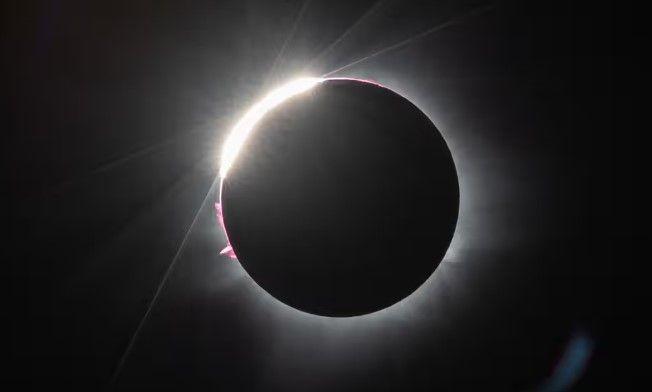INTUSK MAGAZINE
TO THE CORE OF YOUR HEART
Mysterious Cosmic Threads Found in Milky Way
June 3, 2023
After surveying the galaxy, astronomers found thousands of enigmatic cosmic threads that point towards the supermassive black hole at the center of the Milky Way.
The strange filaments resemble on a large scale the dots and dashes of morse code and each one extends five to ten light years through space. They extended 25,000 light years from Earth from the galactic centre like shattered spokes on a huge wheel.
Farhad Yusef-Zadeh, an astronomer at Northwestern University in Evanston, Illinois, said he was stunned to discover the structures in data taken by the MeerKAT radio telescope in the Northern Cape of South Africa.
The observatory, the most sensitive radio telescope in the world, photographed the threads during a record-breaking 200-hour survey of the galactic core.
Four decades ago, Yusef-Zadeh found much larger, vertical filaments surrounding Sagittarius A*, the black hole at the centre of the Milky Way, in data gathered by another telescope called the Very Large Array in New Mexico. Those structures dangle perpendicular to the plane of the Milky Way disc and measure 150 light years from top to bottom.
Uncertainty persists as to what caused the more numerous vertical filaments, but research has revealed that they have strong magnetic fields and emit radio waves as cosmic ray particles approach the speed of light.
The existence of the smaller, horizontal filaments that lead back to the Milky Way's center almost went unnoticed, claims Yusef-Zadeh, because scientists—including himself—have been preoccupied trying to understand the nature of the enormous vertical threads.
When the researchers filtered out the background noise from the MeerKAT images, the shorter, horizontal threads that emanated from the centre of the Milky Way came into sharper focus. According to Yusef-Zadeh, the structures described in the Astrophysical Journal Letters formed in a manner distinct from how the larger, vertical filaments did.
He surmises that hot plasma streaks pointing back towards the black hole were produced when material from the black hole's outburst, which occurred about 6 million years ago, collided with nearby stars and gas clouds. The outcome is similar to blowing paint blobs with a hairdryer across a canvas.
Astronomers hope to gain a better understanding of the black hole's spin as well as the accretion disc of material falling into it by studying the cosmic threads.




